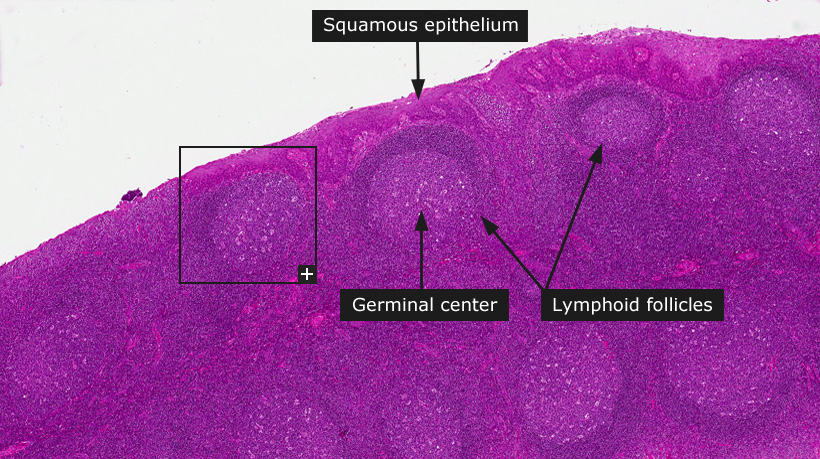Tonsil

Tonsil
Tonsils are part of our immune system and consist of large, partly encapsulated aggregations of lymphoid tissue. The tonsils are located in the epipharynx and mesopharynx, in close connection with the entrance to the respiratory and gastrointestinal systems, enabling the reception of pathogens from the air that we breathe. The pharyngeal, tubular, palatine and lingual tonsils encircle the oral and nasal cavity and are referred to as the tonsillar ring, or Waldeyer ring.
The tonsils are covered by a stratified squamous epithelium. The squamous epithelium forms deep irregular invaginations into the tonsils. Underlying the epithelium numerous lymph follicles are present. Lymph follicles are spherical aggregations of lymphocytes. Primary lymph follicles appear as a homogeneous aggregations of darkly stained small lymphocytes. Secondary lymph follicles have a lighter germinal center, representing proliferating B-cells. A typical feature of tonsils is the presence of lymphocytes that infiltrate into the squamous epithelium of crypts and the mucosal surface.
|